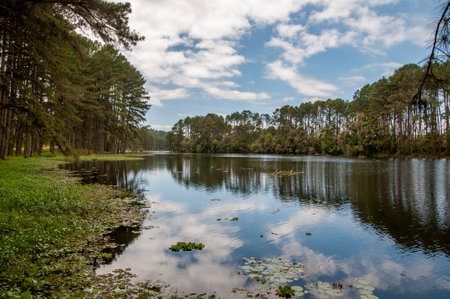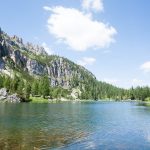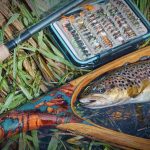Casting Lines in the Wild: Why National Parks Are Angler Paradise
There’s something truly special about fishing in America’s national parks. Whether you’re knee-deep in a crystal-clear river or casting from the shore of a high-altitude lake, these protected lands offer a one-of-a-kind angling experience that blends nature, adventure, and conservation. What makes them so unique? It all starts with diversity—of both landscapes and species.
Stunning Natural Backdrops
Imagine reeling in a rainbow trout with snow-capped peaks in the background, or casting your line as elk graze nearby. From the towering cliffs of Yosemite to the vibrant wetlands of Everglades National Park, each location offers postcard-worthy views that elevate every fishing trip into a memorable outdoor escape. These aren’t just good spots for fishing—they’re some of the most beautiful places in the country.
Diverse Ecosystems, Abundant Species
National parks span deserts, forests, mountains, and coastlines, creating habitats for an impressive variety of fish. Whether you prefer fly fishing in cool mountain streams or angling for bass in warm southern waters, there’s a park that fits your style. Here’s a quick look at the kinds of species you might encounter across different regions:
| Region | Typical Park Example | Popular Fish Species |
|---|---|---|
| Mountain West | Rocky Mountain NP (CO) | Brook Trout, Cutthroat Trout |
| Southeast | Everglades NP (FL) | Largemouth Bass, Snook |
| Northeast | Acadia NP (ME) | Landlocked Salmon, Smallmouth Bass |
| Pacific Northwest | Olympic NP (WA) | Steelhead, Coho Salmon |
A Commitment to Conservation
The National Park Service works hard to balance recreation with preservation. That means strict regulations on catch limits, invasive species prevention, and habitat restoration—ensuring that future generations can enjoy these waters too. As anglers, it’s important to respect these rules and support sustainable practices like catch-and-release when appropriate.
Your Role as a Responsible Angler
- Always check park-specific fishing regulations before casting your line.
- Avoid introducing non-native bait or species into park waters.
- Use barbless hooks where required to make catch-and-release safer for fish.
If you’re looking for more than just a great catch—if you want solitude, scenery, and a deeper connection to nature—America’s national parks are calling. Pack your tackle box and get ready to explore the ultimate angler’s tour across some of the most iconic landscapes in the U.S.
2. Western Wonders: Fly Fishing in Yellowstone and Glacier
When it comes to fly fishing in Americas national parks, the Rocky Mountain region delivers some of the most iconic experiences. Two standout destinations—Yellowstone National Park and Glacier National Park—offer world-class trout fishing set against stunning backdrops of geysers, waterfalls, and alpine wilderness.
Yellowstone National Park: A Trout Angler’s Paradise
Yellowstone is often called the birthplace of American fly fishing, and for good reason. With rivers like the Madison, Firehole, and Lamar, anglers can target wild rainbow, brown, brook, and native Yellowstone cutthroat trout. Each river has its own personality and seasonal quirks.
Top Fly Fishing Spots in Yellowstone
| River | Best Time to Fish | Target Species | Fly Suggestions |
|---|---|---|---|
| Madison River | Late Spring to Fall | Browns & Rainbows | Hoppers, Nymphs, Streamers |
| Lamar River | Mid-Summer to Early Fall | Cutthroat Trout | Dry Flies (Adams, Elk Hair Caddis) |
| Firehole River | Spring & Late Fall | Browns & Rainbows | Soft Hackles, Small Nymphs |
Tips for Success in Yellowstone
- Water Temps Matter: In summer months, avoid mid-day heat on the Firehole where water temps can spike.
- Pack Bear Spray: Wildlife encounters are common—stay alert and prepared.
- Catch-and-Release Friendly: Barbless hooks are recommended to protect native species.
Glacier National Park: High Country Fly Fishing Adventures
If you’re looking for solitude and scenery with your casts, Glacier National Parks alpine lakes and cold-water streams are a dream come true. While it doesnt have as many famous rivers as Yellowstone, its glacial-fed waters are home to native Westslope cutthroat trout and elusive bull trout.
Top Fly Fishing Spots in Glacier
| Waterbody | Type of Fishing | Best Season | Fly Recommendations |
|---|---|---|---|
| Snyder Lake | Alpine Lake Casting | Late Summer to Early Fall | Midges, Terrestrials, Small Streamers |
| Belly River | Pocket Water & Runs | Mid-Summer | Caddis Patterns, Mayflies |
| Kintla Lake (Upper Creek) | Casting from Shore or Canoe | July–September | Nymphs under Indicator, Dry-Dropper Rigs |
Tips for Success in Glacier National Park Waters
- No Stocked Fish: All fish are wild—handle with care and practice ethical catch-and-release.
- Trek Lightly: Many lakes require hiking in—pack your gear accordingly.
- Bull Trout Alert: Federally protected—if caught accidentally, release immediately without removing from water.
Your Rocky Mountain Fly-Fishing Toolkit:
- Rod: 9-foot 5-weight rod for versatility across rivers and lakes.
- Tippet: Use fluorocarbon tippets (4X–6X) for spooky fish in clear waters.
- Bugs: Stock up on local favorites—Parachute Adams, Elk Hair Caddis, Prince Nymphs.
The combination of legendary waters in Yellowstone and the high-elevation serenity of Glacier makes this leg of the Ultimate Angler’s Tour unforgettable. With the right flies, timing, and a little mountain luck, you’re in for an epic Western fly-fishing experience.

3. Southern Serenity: Bass and Catfish Hotspots in the Everglades
The Everglades National Park in Florida is a dream come true for freshwater anglers looking to hook into largemouth bass and catfish. Known for its vast slow-moving waters, thick vegetation, and unique swamp ecosystem, this southern gem offers peaceful fishing surrounded by stunning natural beauty and diverse wildlife.
Top Species to Target
While the Everglades are home to a variety of fish species, two stand out as favorites among local and visiting anglers:
| Fish Species | Best Time to Catch | Bait & Tackle Tips |
|---|---|---|
| Largemouth Bass | Late winter through early spring | Soft plastic worms, spinnerbaits, topwater lures; medium-action rods |
| Catfish (Channel & Bullhead) | Year-round, best at dusk or dawn | Stink baits, cut bait, nightcrawlers; sturdy rod with strong line |
Navigating the Swamp Terrain
The Everglades’ maze of sawgrass marshes and slow-moving water can be tricky to navigate. Flat-bottomed boats or kayaks are ideal for exploring shallow areas. GPS navigation is helpful, but always carry a map and compass as backup. Be mindful of sudden weather changes—afternoon thunderstorms are common in summer months.
Fishing Access Points:
- Flamingo Marina: Offers boat ramps and access to both fresh and saltwater zones.
- Coot Bay: A favorite for bass anglers looking for calm waters.
- L-67 Canal: Accessible by road and known for steady bass action.
Respecting Wildlife in the Glades
The Everglades are more than just a fishing spot—they’re a protected habitat teeming with life. You might encounter alligators, wading birds, turtles, and even manatees while on the water. Always keep a safe distance from wildlife, avoid feeding animals, and follow park regulations to ensure this unique environment remains pristine for future generations.
Tips for Responsible Fishing:
- Use barbless hooks when possible to minimize harm during catch-and-release.
- Avoid disturbing nesting areas along the shorelines.
- Packing out all trash—including fishing line—is a must.
- If youre unsure about regulations, check with park rangers before casting your line.
4. Mountain Streams and High Country Lakes: Fishing in the Sierra Nevada
If youre looking for a true wilderness fishing adventure, the Sierra Nevada mountains offer some of the best high-altitude angling opportunities in America. With crystal-clear waters, alpine meadows, and towering granite peaks, Yosemite National Park and Sequoia & Kings Canyon National Parks are must-visits on your ultimate anglers tour.
Yosemite National Park: Backcountry Trout Fishing
Yosemite isnt just famous for its waterfalls and cliffs — its also home to pristine backcountry streams and lakes filled with rainbow trout. Many of these spots require hiking or backpacking, but the reward is worth it: peaceful solitude and wild fish that rarely see lures.
Top Fishing Spots in Yosemite
| Location | Fish Species | Access Type |
|---|---|---|
| Twin Lakes (Mono Pass) | Rainbow Trout | Backpacking/Hiking |
| Mersey Lake | Brook & Rainbow Trout | Day Hike |
| Lyell Fork of the Tuolumne River | Rainbow Trout | Backpacking |
Sequoia & Kings Canyon: Remote Waters Worth Exploring
The rugged terrain of Sequoia & Kings Canyon is a haven for serious anglers. Here youll find glacier-fed lakes and fast-moving mountain streams surrounded by dramatic alpine scenery. These parks are perfect for fly fishing enthusiasts who enjoy challenging hikes followed by peaceful casts into untouched waters.
Top Fishing Spots in Sequoia & Kings Canyon
| Location | Fish Species | Access Type |
|---|---|---|
| Bubbs Creek | Rainbow Trout | Trail Access |
| Kearsarge Lakes | Golden Trout | Backpacking/Hiking |
| Twin Lakes (Lodgepole Area) | Brook Trout | Day Hike |
Tips for Fishing in the Sierra Nevada High Country:
- Pack light: Youll be hiking at high elevations, so keep your gear minimal but effective.
- Use barbless hooks: Many areas require them to protect native fish populations.
- Check regulations: Some lakes and streams have seasonal closures or catch-and-release rules.
- Be bear aware: Store food properly and follow park guidelines to stay safe.
The Sierra Nevadas national parks offer an unforgettable mix of scenic beauty and rewarding fishing. Whether you’re casting into a cold mountain stream or a hidden lake beneath snow-capped peaks, this is where wilderness angling comes alive.
5. Tides and Trails: Coastal Fishing Adventures in Acadia and Olympic
If youre craving salt in the air and a rod in your hand, Americas coastal national parks offer some of the most unique fishing experiences around. In particular, Acadia National Park on the East Coast and Olympic National Park on the West Coast are prime spots for anglers looking to explore brackish and saltwater environments. From surfcasting along rugged shorelines to dropping a line from a pier, these parks blend scenic beauty with serious fishing opportunities.
Acadia National Park, Maine
Located on Mount Desert Island in Maine, Acadia offers access to both freshwater lakes and the briny Atlantic Ocean. Anglers here can try their luck with surfcasting right from the rocky shores or head to nearby piers and harbors.
Popular Fishing Techniques in Acadia
- Surfcasting: Best during early morning or dusk hours when striped bass are feeding close to shore.
- Pier Fishing: Accessible at local harbors like Bar Harbor and Southwest Harbor, where you might catch mackerel or flounder.
- Kayak Fishing: Ideal for exploring protected coves along the coast while targeting pollock or harbor species.
Common Species Found
| Species | Best Season |
|---|---|
| Striped Bass | Late Spring to Early Fall |
| Mackerel | Summer |
| Flounder | Spring through Fall |
Olympic National Park, Washington
Over on the Pacific side, Olympic National Park boasts a wild coastline that stretches over 70 miles. This diverse landscape includes tide pools, river mouths, estuaries, and oceanfront beaches—each offering its own fishing flavor. The park is especially known for its salmon runs and rugged surfcasting locations.
Top Spots for Saltwater Fishing in Olympic
- Kalaloch Beach: Great for surfcasting for perch and sea-run cutthroat trout.
- La Push Pier: Located near the Quileute Reservation, this pier offers easy access to rockfish and salmon during migration seasons.
- Mora Area Estuaries: Ideal for fly fishing in brackish water where rivers meet the Pacific.
Main Fish Species You Can Catch
| Species | Best Time to Fish |
|---|---|
| Salmon (Chinook, Coho) | Late Summer to Fall |
| Searun Cutthroat Trout | Spring and Summer |
| Rockfish & Surfperch | Year-round (best in summer) |
Tips for Coastal Fishing in National Parks
- Tide Timing: Check local tide charts—many fish feed actively during incoming tides.
- Packing Essentials: Bring waders, waterproof gear, and salt-resistant tackle.
- Parks Regulations: Always check current state and park-specific rules on licenses and species limits before casting out.
Bait your hook, watch the tide roll in, and enjoy one of the most peaceful ways to connect with nature. Whether youre chasing stripers in Maine or casting into Pacific swells in Washington, these coastal parks promise unforgettable angling adventures.
6. Preserving the Catch: Regulations, Licenses, and Responsible Angling
Fishing in Americas national parks is a dream come true for many anglers. But with that privilege comes responsibility. Whether youre casting a line in Yellowstones rivers or paddling through Everglades backwaters, its essential to understand and follow local fishing regulations, obtain proper licenses, and practice conservation-minded angling.
Understanding Fishing Regulations in National Parks
Each national park has its own set of fishing rules designed to protect native fish species, maintain ecological balance, and ensure sustainable recreation for future generations. These regulations can vary widely depending on the park and the type of water body (river, lake, or stream) youre fishing in.
Common Fishing Regulations May Include:
- Seasonal closures during spawning periods
- Daily catch limits per species
- Gear restrictions (e.g., barbless hooks or fly-fishing only)
- Bait limitations to prevent invasive species
How to Get Your Fishing License
You’ll need a valid state fishing license for the state where the national park is located. In some cases, you might also need a special permit specific to the park. Heres a quick overview:
| National Park | State License Required | Special Park Permit Needed? | Where to Get It |
|---|---|---|---|
| Yellowstone National Park | No (Federal land) | Yes | NPS Yellowstone Site |
| Great Smoky Mountains National Park | Yes (TN or NC license) | No | NPS Smokies Site |
| Everglades National Park | Yes (Florida license) | No | Florida Fish & Wildlife |
The Importance of Conservation Practices
Catch and Release Done Right
If youre not planning on keeping your catch, make sure youre practicing proper catch and release techniques. This helps minimize stress on the fish and increases their chance of survival after release. Use barbless hooks, wet your hands before handling fish, and return them to the water quickly and gently.
Follow Leave No Trace Principles
Your angling adventure should leave nothing behind but ripples in the water. Always pack out all trash—including fishing line, bait containers, and food wrappers—dispose of fish waste responsibly, and avoid damaging vegetation along riverbanks or shorelines.
Quick Tips for Responsible Angling:
- Plan Ahead: Know the rules before you go.
- Tread Lightly: Stay on established trails and boat launches.
- Respect Wildlife: Observe from a distance; don’t feed or disturb animals.
- Leave What You Find: Don’t take natural souvenirs like rocks or plants.
The beauty of fishing in national parks lies not just in the catch but in preserving these wild places for generations to come. With a little preparation and mindfulness, you can enjoy world-class angling while protecting America’s most treasured landscapes.


